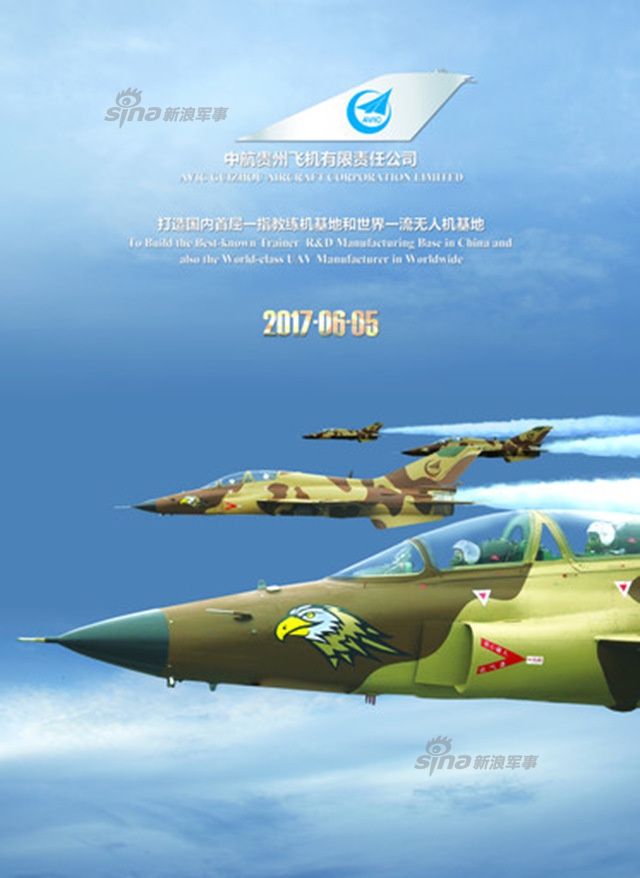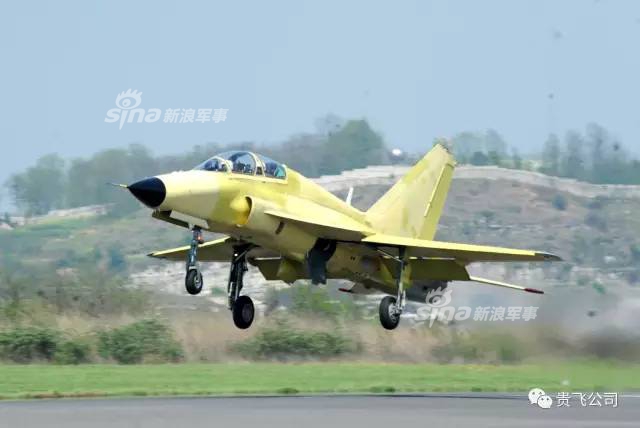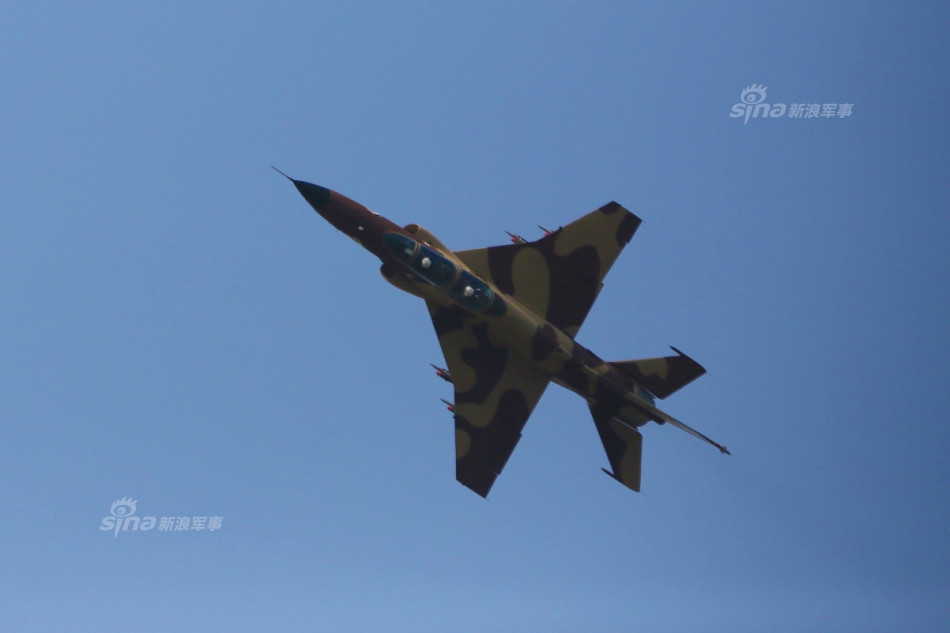You are using an out of date browser. It may not display this or other websites correctly.
You should upgrade or use an alternative browser.
You should upgrade or use an alternative browser.
Chinese Trainer Aircraft (JL-8, JL-9, JL-10 (L-15), etc.)
- Thread starter tphuang
- Start date
plawolf
Lieutenant General
New picture. what is the difference between AJT and LIFT?
An Advanced Jet Trainer (AJT) is your baseline jet trainer, primarily intended to help your greenhorn pilots transition from prop trainers to jet fighters.
These planes are typically capable of high-speed and high-energy manoeuvres, but often lacks advanced radars and avionics and flies very differently from most frontline fighters.
A Lead In Fighter Trainer (LIFT), as the name suggest, is designed to train pilots into fighter pilots, and help ease them into their ultimate frontline fighters. Thus they are typically more advanced (and expensive) than AJTs, especially in avionics and aerodynamic.
Modern LIFTs typically have advanced FBW, modern radar and glass cockpits and very good aerodynamic performance, and is often able to fairly accurately mimic much of the flight envelope of modern 4th gen frontline combat jets.
LIFT aircraft are a fairly new class of trainers, and are ultimately intended to replace, or at a minimum greatly reduce, the need for dedicated twin seat trainer versions of frontline fighter aircraft.
I would say only the likes of the YAK130, T-50, L15/JL10 etc, that have advanced aerodynamics and FBW are true LIFTs.
JL9s would be something that falls between the two, being more capable than a JL8, but falls short of the JL10.
A pilot can probably get 80-90% of the training from a JL9 as they could from a JL10 in that the radar and mission avionics will probably be on par.
But owing to it using off-the-shelf airframe tech, the JL9 cannot mimic the flight characteristics of fighters like the J10 or J11/Su30 anywhere as well as a JL10, so pilots going to frontline units from JL9s will have a harder and probably longer journey to go before they are classed as combat capable on their assigned fighters compared to pilots trained on JL10s.
Semi-Lobster
Junior Member
Great news on the Sudanese purchase. Does anybody know the configuration of the FTC-2000 sold? It appears to be armed with a PL-5 variant and rocket pods, I perhaps a radar as well?
Hendrik_2000
Lieutenant General
Even though it is not at forefront of technology this trainer look fine and adequate for most third world air force. Even PLAN use it since it is cheap and good
On Monday, June 5 at 10:35 am local time, the first supersonic FTC-2000 training aircraft, designed by Chinese aircraft manufacturer GAIC (Guizhou Aircraft Industry Corporation), rolled out at the plant near Anshun, South China.
In three-tone desert livery, it is the first of six aircraft acquired by the Sudanese air force and will take off within a few weeks. The contract, the amount of which was not disclosed, was signed on January 30, 2016 between the two sides and made Sudan the first export client of the program.
On Monday, June 5 at 10:35 am local time, the first supersonic FTC-2000 training aircraft, designed by Chinese aircraft manufacturer GAIC (Guizhou Aircraft Industry Corporation), rolled out at the plant near Anshun, South China.
In three-tone desert livery, it is the first of six aircraft acquired by the Sudanese air force and will take off within a few weeks. The contract, the amount of which was not disclosed, was signed on January 30, 2016 between the two sides and made Sudan the first export client of the program.
Hendrik_2000
Lieutenant General
(cont)
The FTC-2000 is the export version directly derived from the Chinese advanced training aircraft JL-9 . The latter, initially dubbed JJ-7B , aims to replace the old JJ- 7s and is used to provide a very economical solution to train the Chinese pilots who will fly on the 3rd generation fighter jets (4th according to the US classification And Russian).
A slight kinship of the JL-9 can be found in relation to the MiG-21US , especially in the rear part of the aircraft, as they are all probably part of the same "family tree" First began in 2001, more than 35 years after his elder.
A JL-9 from the Chinese Air Force
The JL-9s used by the Chinese Navy
With an MTOW of 9,800 kg, the FTC-2000 can carry up to 2,000 kg of ammunition and external tanks under its 5 export points. The aircraft is 14.55 meters long, 4.10 meters high, with a wingspan of 8.32 meters. It can fly at a maximum speed of Mach 1,6 and a ceiling of 16,000 meters. The autonomy is 2,400 km.
According to the chief engineer of the program, the cockpit of the Sudanese version of FTC-2000 has been revised to adapt to the habits of the pilots, who now benefit from the HOTAS pilot concept and can conduct both in-flight training and Limited tactical fights such as Air-Air and Air-Sol.
GAIC's General Manager, Wang Wenfei (飞文飞), has put much emphasis on exporting the aircraft to the African continent, relying on excellent value for money, simplified maintainability and a very low cost. exploitation.
Apart from Sudan, Nigeria has also shown a strong interest in this aircraft, which can satisfy both the advanced training needs of pilots and the low intensity missions. But GAIC is already working on a naval version of JL-9, called the JL-9G , which greatly improves performance at low speeds and has already found a buyer in the Chinese Navy to train its embarked pilots.
A prototype of JL-9G with landing gear
A JL-9G detached from a springboard
A JL-9G from the Chinese Navy
Henri K.
The FTC-2000 is the export version directly derived from the Chinese advanced training aircraft JL-9 . The latter, initially dubbed JJ-7B , aims to replace the old JJ- 7s and is used to provide a very economical solution to train the Chinese pilots who will fly on the 3rd generation fighter jets (4th according to the US classification And Russian).
A slight kinship of the JL-9 can be found in relation to the MiG-21US , especially in the rear part of the aircraft, as they are all probably part of the same "family tree" First began in 2001, more than 35 years after his elder.
A JL-9 from the Chinese Air Force
The JL-9s used by the Chinese Navy
With an MTOW of 9,800 kg, the FTC-2000 can carry up to 2,000 kg of ammunition and external tanks under its 5 export points. The aircraft is 14.55 meters long, 4.10 meters high, with a wingspan of 8.32 meters. It can fly at a maximum speed of Mach 1,6 and a ceiling of 16,000 meters. The autonomy is 2,400 km.
According to the chief engineer of the program, the cockpit of the Sudanese version of FTC-2000 has been revised to adapt to the habits of the pilots, who now benefit from the HOTAS pilot concept and can conduct both in-flight training and Limited tactical fights such as Air-Air and Air-Sol.
GAIC's General Manager, Wang Wenfei (飞文飞), has put much emphasis on exporting the aircraft to the African continent, relying on excellent value for money, simplified maintainability and a very low cost. exploitation.
Apart from Sudan, Nigeria has also shown a strong interest in this aircraft, which can satisfy both the advanced training needs of pilots and the low intensity missions. But GAIC is already working on a naval version of JL-9, called the JL-9G , which greatly improves performance at low speeds and has already found a buyer in the Chinese Navy to train its embarked pilots.
A prototype of JL-9G with landing gear
A JL-9G detached from a springboard
A JL-9G from the Chinese Navy
Henri K.
Chinese aircraft manufacturer AVIC unveiled the export version of its FTC-2000 school and light aircraft for Sudan.
This country has ordered a total of 6 aircraft of this type.
Hendrik_2000
Lieutenant General
JL 9 aka FTC-2000 Shanying development milestone and promo video











